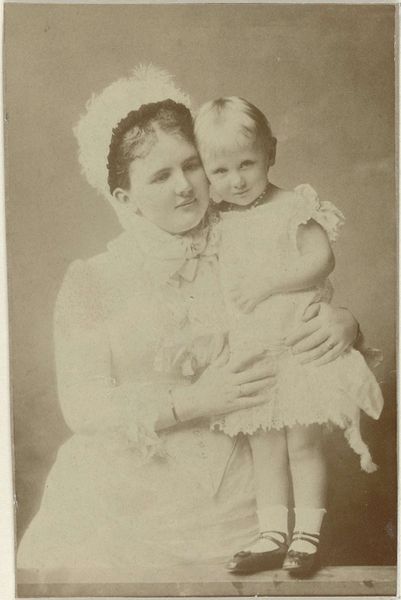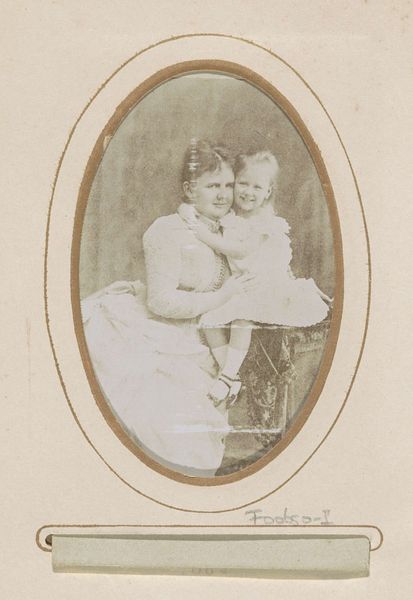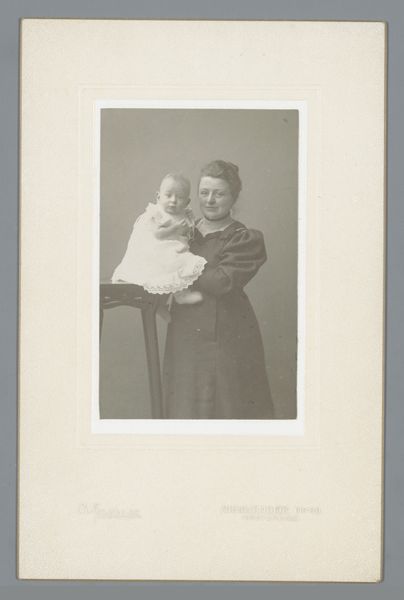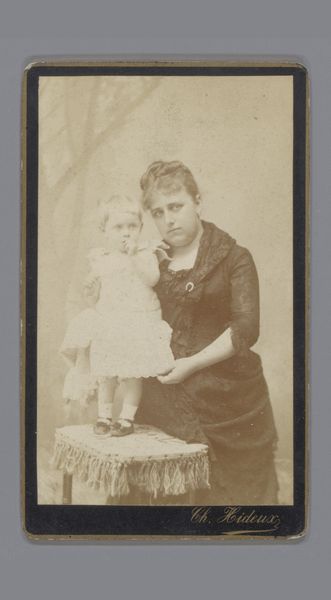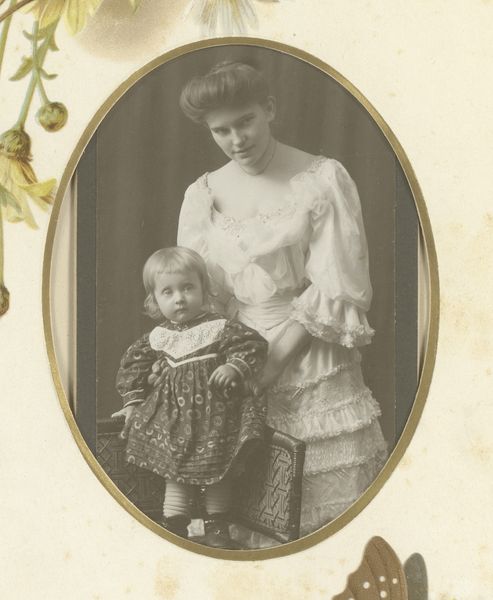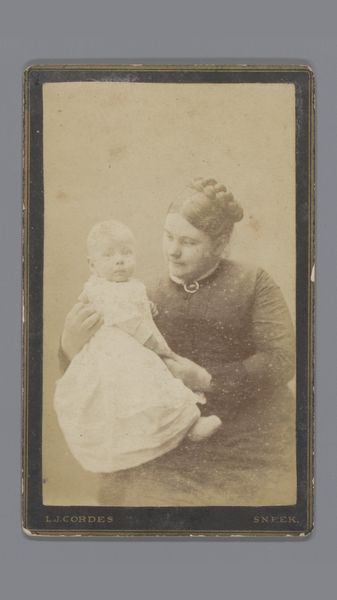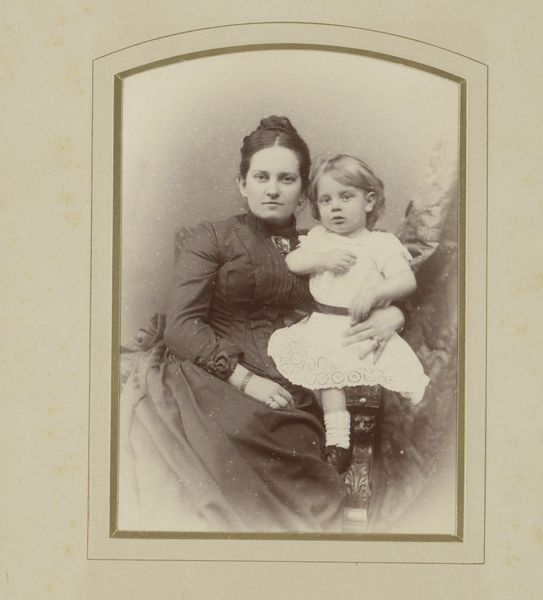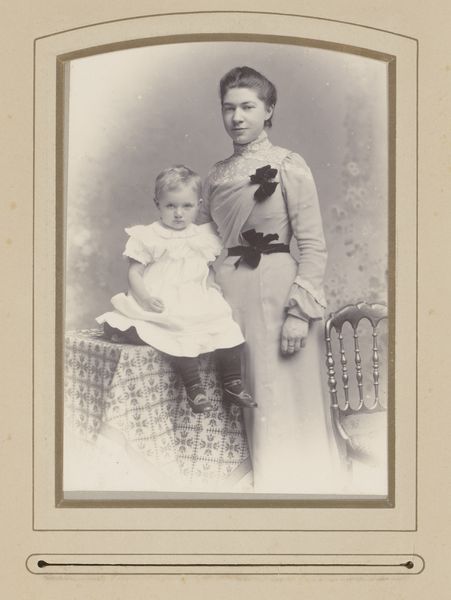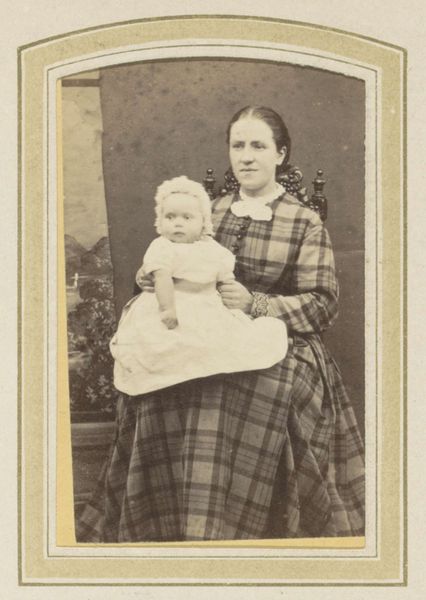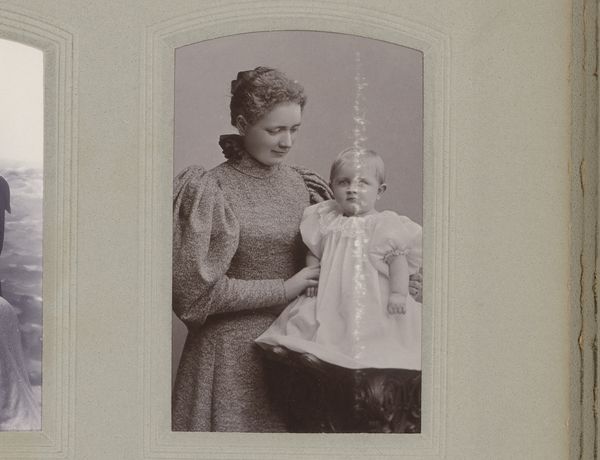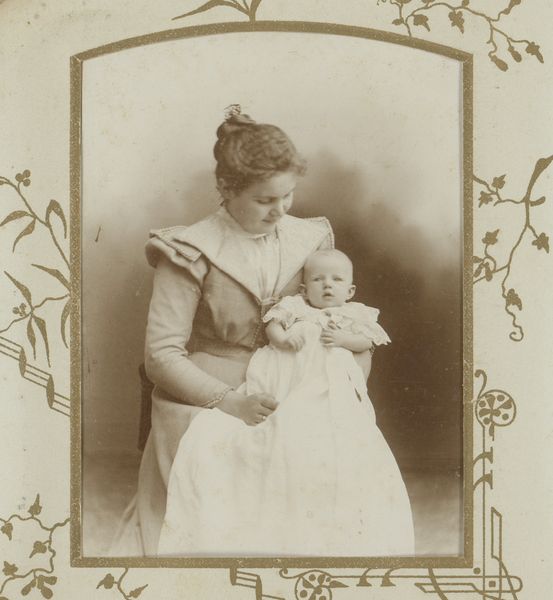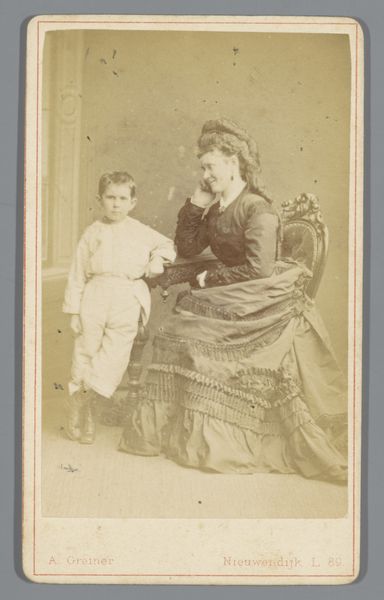
photography, albumen-print
#
portrait
#
mother
#
photography
#
19th century
#
albumen-print
#
realism
Dimensions: height 16 mm, width 109 mm
Copyright: Rijks Museum: Open Domain
Curator: This albumen-print photograph, housed here at the Rijksmuseum, captures Queen Emma with Princess Wilhelmina sometime between 1882 and 1884. Made by the studio of Kameke. Editor: There's a soft, almost dreamy quality to it, despite the formality of the subjects. It feels very posed, but their expressions suggest a tender connection. Curator: Indeed. The photograph provides insight into the construction of royal imagery. The all-white clothing symbolizes purity and innocence, essential virtues projected onto the Queen and future monarch. Think of it as visual propaganda for the Dutch monarchy. Editor: Precisely. White functioned as a status symbol, as well as innocence in the image of the little Princess Wilhelmina and mother Emma. It suggests, at least on the surface, social unity and the promise of stable governance, at a time that saw growing social change in Europe and the world. Curator: Consider, too, the repeated use of circular shapes, such as the collars or hats. The curve implies eternity and an embracing symbolism, linking the image with long held archetypes of motherhood and family, power passing through the bloodline. It lends this an additional air of timelessness. Editor: The reality behind those circles and that white clothing and carefully manufactured public image, I think, would have involved enormous state efforts in managing public expectations. Here, the personal and the political are deeply intertwined. I wonder, who are these images meant to truly serve? Curator: The answer to this question lies in the symbols. To this day, these images of the monarchy play a crucial role in fostering national identity and allegiance. That careful distribution becomes almost sacred. Editor: Looking closer, the small details—like the princess's small shoes and slightly uncertain expression, provide layers of narrative complexity. We are not simply looking at representations, but the very crafting of a visual culture meant to promote and sustain very specific gender, and class roles. I believe those types of cultural cues remain pervasive even today. Curator: Yes, this image functions on a variety of layers, personal and political. Understanding how this one picture engages in creating powerful emotional bonds with viewers over time—bonds connected to history and future aspirations, rooted deeply within national cultural memory—that's what interests me. Editor: And it serves as a sharp reminder for how symbols, even within seemingly gentle photographs, reinforce complex political and cultural power structures, then and now.
Comments
No comments
Be the first to comment and join the conversation on the ultimate creative platform.
